All About Functional Training
Daily life isn’t easy. Our days can work us hard and put us away wet. Poor posture, kids, and desk jobs have resulted in
bodies that don’t “fire” as they should, resulting in everything from back pain to knee problems. Then we wonder why, no
matter how strong we might be in the weight room, we still have problems. The answer? We are not focusing enough on
functional training and conditioning.
Let’s start with the basics. What is functional training? In short, functional training (or functional conditioning) is training
for life. The goal of functional training is make the activities of daily life easier to execute by performing work against resistance.
The result of a good functional training program is increased neuromuscular efficiency, coordination, and strength, as well as decreased
risk of injury.
Functional training focuses on strengthening one’s core, as both the center of power and movement for the body,
and also on creating a stable foundation from the feet up through the body. Compound movements move the body in
multiple planes of motion rather than isolated joints and single planes of motion. Exercisers will push and pull
while moving up, down, side to side, all while working on flexibility, core engagement, strength, balance, and power.
Warm Up
As with any exercise program, a proper warm-up is a must. Aim to increase your heart rate for at least 5 minutes prior to
beginning the exercises. The goal of the warm-up is to increase circulation and to start getting the muscles primed and engaged
for the workout in order to prevent injury and to get the most from each movement. Some examples of effective warm-ups for this
or other types of workouts:
- Exercise or spin bike
- Jump rope
- Brisk walking on Incline, working into a run
30-second periods of high-intensity intervals, such as high knees, fast feet, squat jumps, butt kicks. Finish with dynamic stretches such as walking lunges and arm circles.
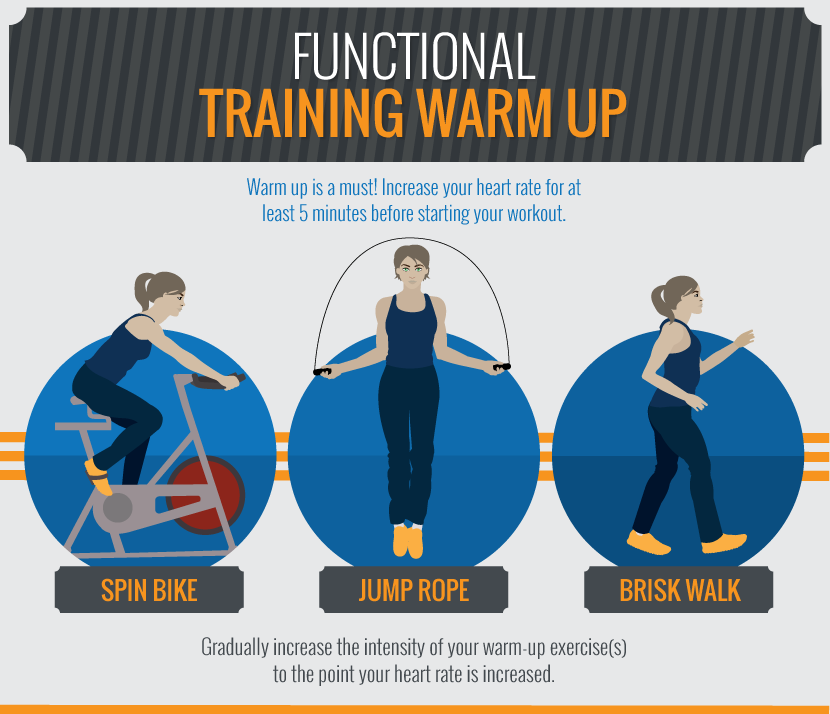
Reminders
Methods of progression are listed after the exercises. It is suggested that you start by working through the
exercises first without added weight until you are comfortable with and in control of the movements. All movements,
regardless of the speed or power that is required of the move, should be executed with control; resist the urge to use
momentum or “cheat” the move by throwing your weight around. Engage first with the core for stability and power; engage
from the center of your body outward.
Exercises
The following exercises are total-body movements that work the major muscle systems of the body in multiple planes of motion
while also mimicking daily movements. Pick five exercises, three to four circuits, 10 to 15 reps per side.
Turkish Get-Ups
Turkish get-ups (TGUs) are a foundational movement in functional training. Like the (properly performed) deadlift, TGUs require all of
the muscle systems to execute and does so in very basic, foundational ways. A single rep is from the floor to standing to the floor, both sides.
Tips for getting the most from your TGU: Focus on the kettlebell or dumbbell throughout the move, and keep your arm straight but your elbow soft.
his is not about momentum! This is about control, stability, and core strength.
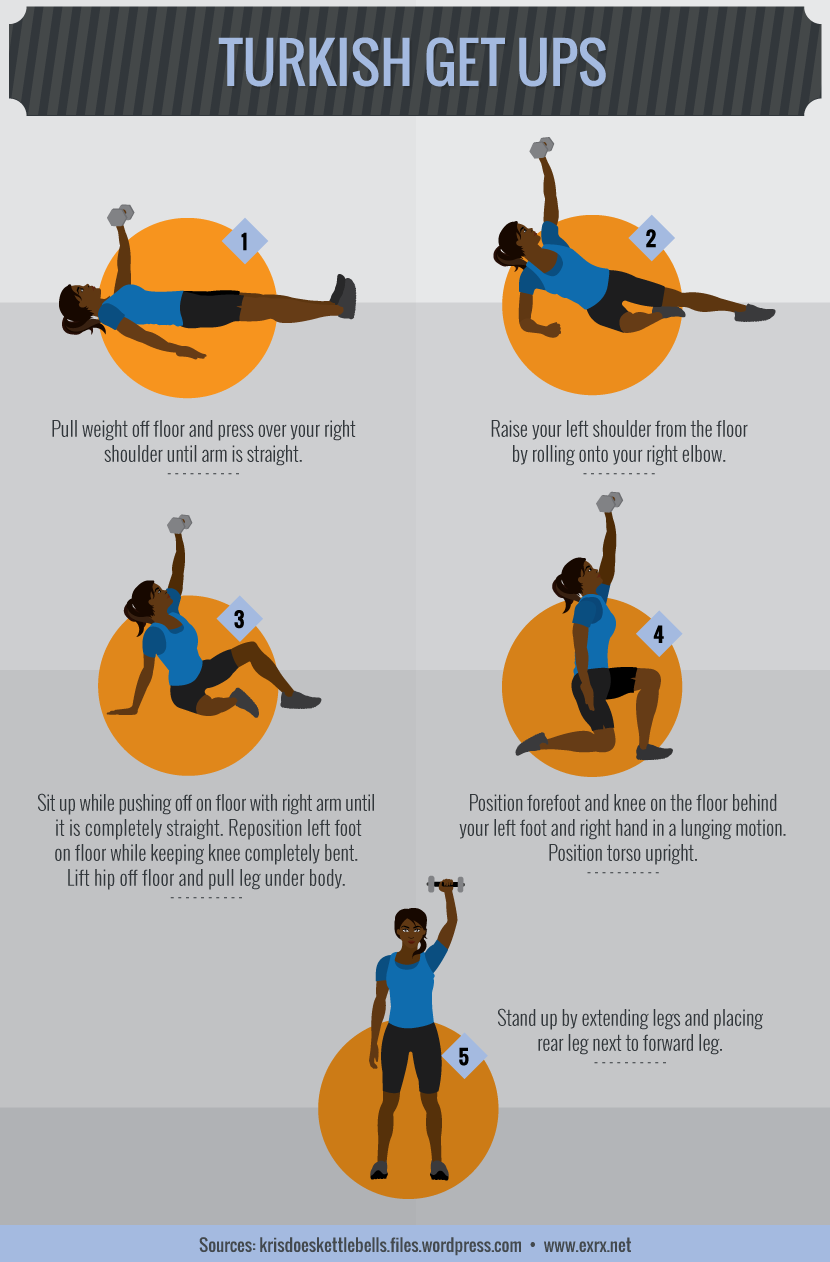
Single Leg Deadlift with Row
The single leg deadlift with row is a progression from the easier, more foundational function movement deadlift plus row.
One rep is from foot on ground through row and return to foot on ground (or keep your foot off the ground for extra stability work!), both sides.
Keep in mind: Use your glutes and hamstrings, not your lower back, to execute the deadlift. Keep rear leg raised as you row, and make
sure to pinch the upper back and shoulders as you lift the weights away from the ground.
If you are unable to maintain balance and control during the exercise, start with a standard deadlift until you are ready. As you progress to
the single leg movement, place your hands on your hips as you develop stability, then add weights with arms toward the ground, then add the row.
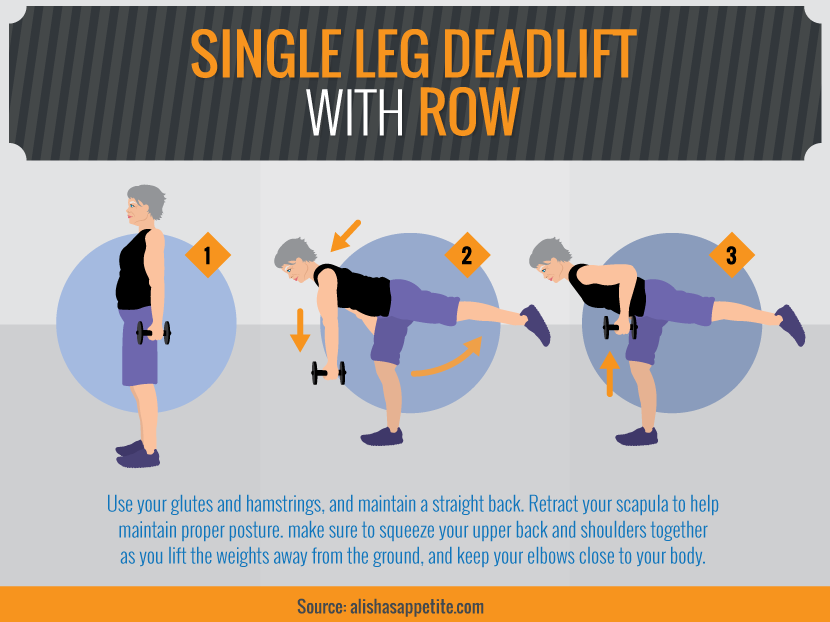
Forward or Reverse Lunge with Shoulder Press or Biceps Curl
The lunge with press or curl is a great functional exercise that mimics daily tasks but with additional weight. Going forward or backward works different
muscles, and you will likely find one much more difficult than the other. Adding on the press or curl strengthens the upper body while challenging the core
and working on coordination.
Important notes: Be careful with your knees in this movement. Make sure to protect your knees by keeping the forward bent knee from going in front
of the toe, and use the inner and outer thighs to keep the knee from “traveling” as you move toward the ground. Optimal form in the lunge will be a
study of 90° angles. Practice your lunge to find out how far forward or backward you need to go in order to achieve these 90° angles (use a mirror)
before adding the upper body.
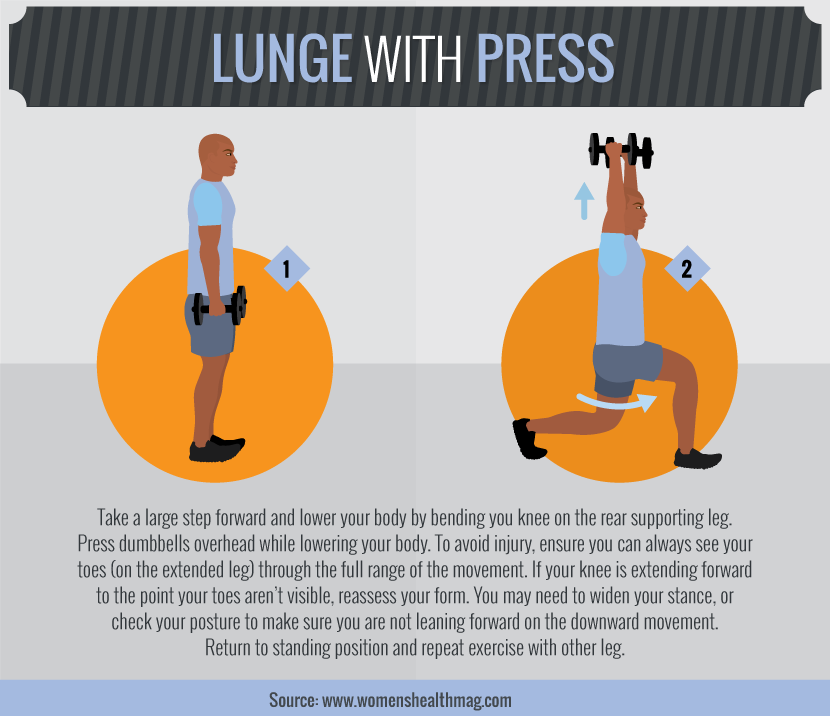
Squat with Diagonal Reach and Raise
The squat with diagonal reach and raise is a great way to maintain stability but also to work in multiple planes of motion with a
natural twisting motion of the body. Complete one side first before moving to the other side. Keep feet about hip-width apart in a
basic squat and follow the motion of the ball with your body. Make sure that hips turn, but do not get displaced from the center of gravity.
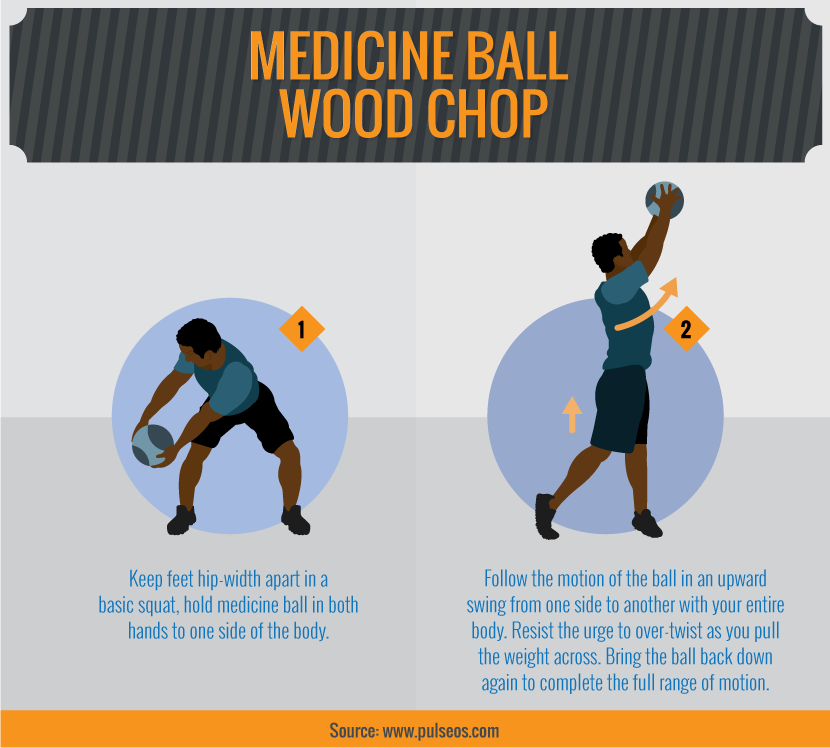
Supine Elevated Bridge with Leg Extension
The supine elevated bridge with leg extension is an excellent backside-of-body strengthener that also engages your quadriceps
and challenges your balance. But it does not neglect the front of the body! The upper and lower body will work together, but also
separately, to twist and resist the twist, extend, and flex.
Make sure to engage throughout your glutes, upper hamstrings, and lower back, as well as triceps and upper back.
Use the front of the body to help provide stability and strength.
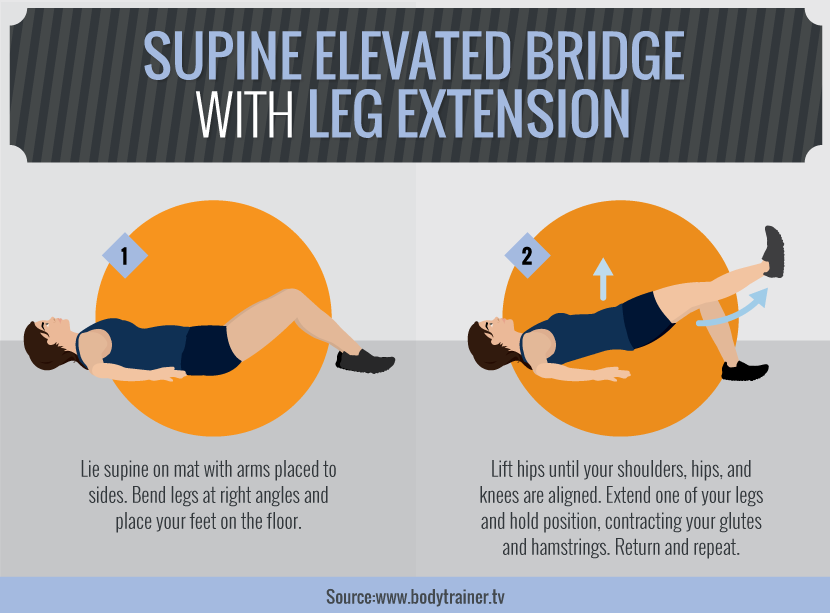
Plank Pull Through
The plank pull through, in many ways, is the counterpart to the supine elevated bridge with leg extension, but with a bit more lateral movement.
Resist the urge to over-twist as you pull the weight across. One rep is a pull from each arm.
Chair Pose Squat (with forward raise) on Bosu (or cushions)
Chair pose squat on a Bosu ball (or other unstable surface, such as a wobble board or thick cushions) challenges your control
and stability while working your upper and lower body.
Weights should be light to protect the shoulder, which should achieve full range of motion as hands move from hips to a straight line with
your shoulder and hips. As you sink into the “chair,” sit back and protect your lower back by slightly tucking your tailbone under (do not
arch your back beyond what is natural while standing). Work to keep your knees from traveling from side to side as you lower down.
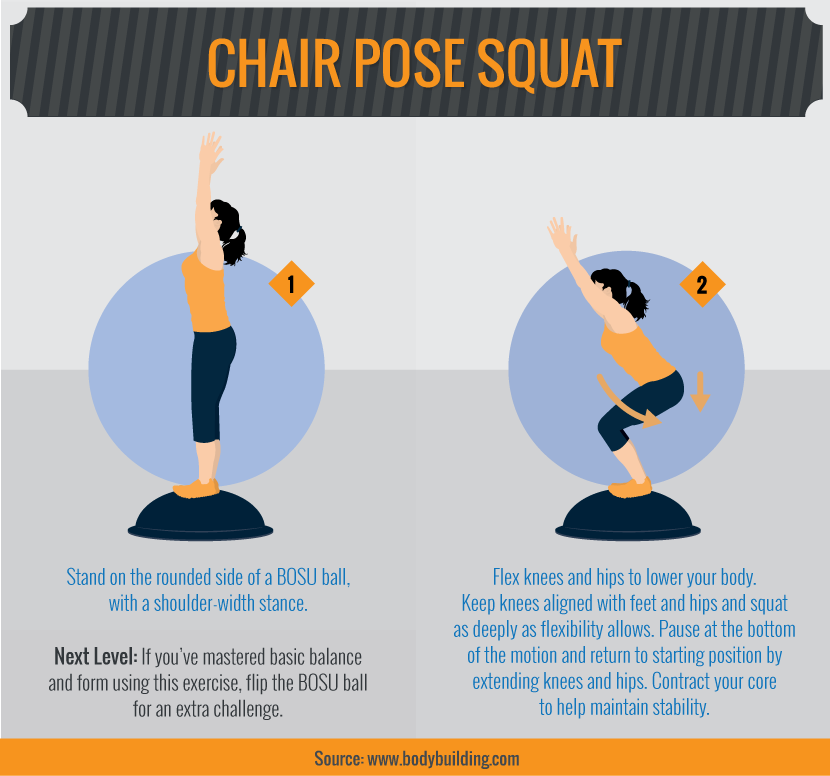
Medicine Ball Push-Ups
Medicine ball push-ups will work the chest, the arms, and the muscles that are utilized with a plank. To
regress the move, go to knees; to progress the move, hold one leg raised and engage glutes.
Step-Ups with Glute Extension (Optional Upper Body)
The step-up is an excellent compound move, and adding a glute extension (or kickback) as well as a shoulder press or biceps curl makes it one of
the best total-body moves around. As with all other moves, make sure the knee does not travel, protect your lower back, and move with control.
As you kick back, hold the kick at the highest point and clench the glutes. Do not turn the toe to the side – slightly turn the toe
toward center so as not to use the outer glutes. Upper body exercises to add as you perform the kickback include shoulder press, biceps
curl, lateral shoulder raise, or front shoulder raise.
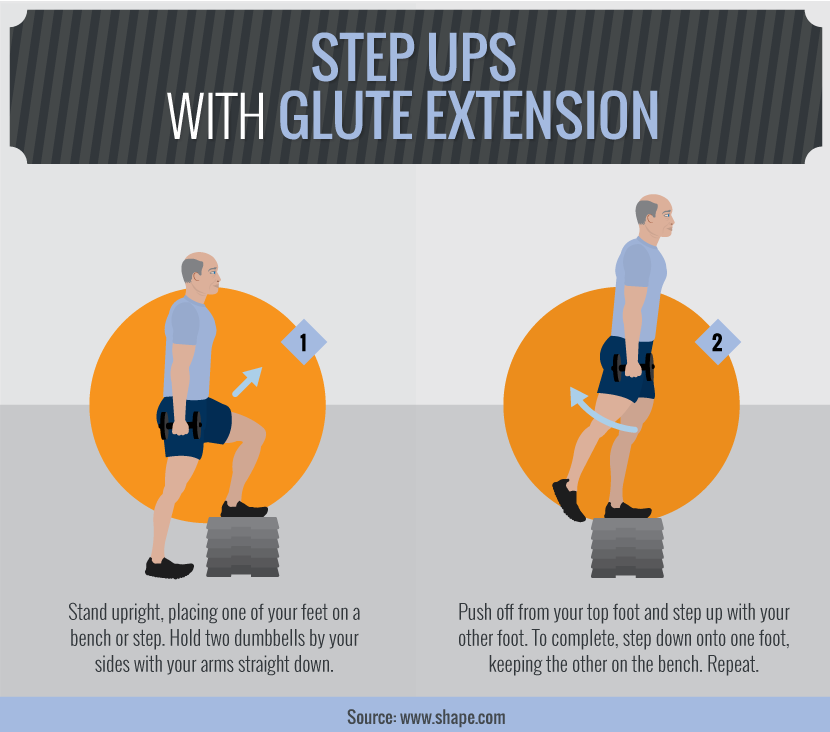
Side Lunge to Lateral Leg Raise (Optional Upper Body)
This is the lateral counterpart to the step-up, so if you use these two exercises together, make sure to press when doing one exercise and curl for the other.
As you lift your leg to the side, hold at the peak. Do not turn the toe to the side – in fact, point the toe slightly downward, leading with the
heel to isolate the outer glute. Also avoid leaning too far from vertical. Upper body exercises to add as you perform the lateral leg raise include
shoulder press, biceps curl, lateral shoulder raise, or front shoulder raise.
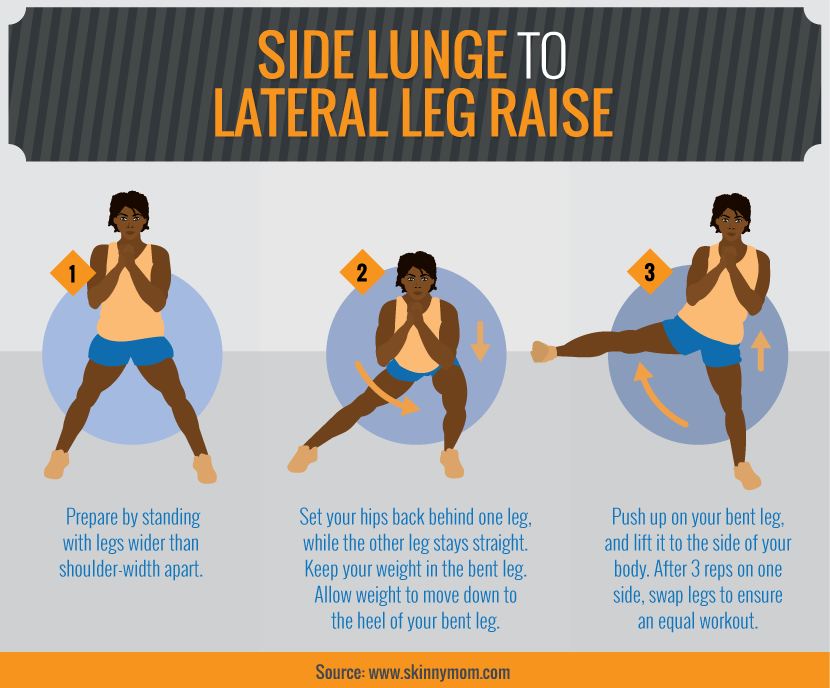
Cool Down
With so much total-body work, a good cooldown is absolutely necessary. Spend three to five minutes doing gentle dynamic
stretching or easy work on an exercise bike. Choose movement that does not raise the heart rate, but stabilizes it. Walking
is a great option, but lower the speed and incline from that used during the warm-up.
Functional training is not just about training for sport, though such training is excellent for all sports – functional training is
about training for life and correcting the imbalances created by modern-day living, from carrying kids on our hips to sitting all day.
When the systems of the body work together as a team, we can become super versions of our everyday selves.
Embed the article on your site

